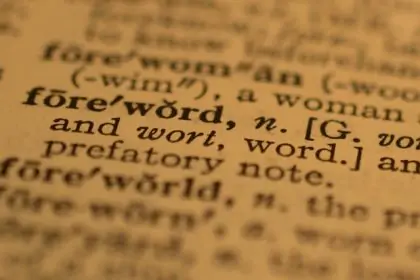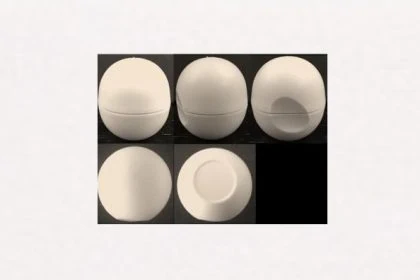The dispute about the likelihood of confusion between the two EU trademarks Φ and Ø involved more than the visual comparison of figurative signs. For the parties agreed that it was about the representation of letters. A letter as a trademark – but what applies if no one speaks these languages?

In November 2017, the applicant, Cole Haan LLC (UK), applied for registration of the simple figurative sign Ø as an EU trademark for goods in Nice Classes 18 and 25, including suitcases, bags and clothing. Subsequently, in February 2018, the intervener, Samsøe & Samsøe Holding A/S (Denmark), filed an opposition against this trade mark registration and relied on its own earlier figurative mark designating the European Union, which represents the similar figurative sign Φ, quasi the same signs, only tilted at different angles. The Danes also claim protection with their earlier EU trademark for goods in Nice classes 18 and 25, including leather goods, suitcases and clothing.
Samsøe & Samsøe Holding A/S therefore claimed likelihood of confusion, and successfully so: the EUIPO Board of Appeal and Opposition Division upheld the opposition in its entirety. The applicant Cole Haan LLC appealed against this decision to the European Court of Justice (European Court of First Instance, CFI).
Φ and Ø – letter as trademark
First of all, in doing so, the CFI found that the mark applied for is a representation of the letter “Ø”, which is part of the alphabet used in the Danish language, whereas the earlier mark is a representation of the Greek letter “ϕ” or the letter “Φ”, which is from the Cyrillic alphabet. This was not in dispute between the parties. It was therefore actually a question of one letter each as a trademark.
However, the relevant public was defined as French-speaking EU consumers – and in French none of the letters “Ø”, “Φ” and “ϕ” are used and French-speaking consumers do not normally speak Danish, Bulgarian or Greek, the Board of Appeal had stated.
The applicant objected to this. Consumers would know, even without speaking or understanding Danish, that the mark applied for was a letter of the alphabet in the “Scandinavian languages”. In their respective languages, the letters ‘Φ’ and ‘Ø’ represented by the conflicting signs were pronounced differently, so that the signs were phonetically comparable and showed no similarity at all.
CFI: Knowledge of a foreign language not generally presumed
But the CFI rejected this objection. According to the case-law, knowledge of a foreign language cannot generally be presumed, the court stressed, referring to the judgment of 13 September 2010, Inditex v OHIM – Marín Díaz de Cerio (OFTEN), T-292/08, EU:T:2010:399, para 83). Moreover, even if the foreign origin of the word is recognised, the pronunciation does not necessarily correspond to that of the language of origin, the CFI added.
Ultimately, this is futile anyway, because in the context of assessing the likelihood of confusion, it should have been proven anyway that a majority of the relevant public has this ability to pronounce correctly. But this was not done. Therefore, the CFI ruled, the Board of Appeal had rightly decided that it was not possible to make a phonetic comparison of the conflicting signs. The same applies to the conceptual comparison, which is also not possible, as the older sign has no meaning for the majority of consumers. The applicant had admissibly not put forward anything that contradicted this, the CFI ruled.
Visual comparison
In the visual comparison, the applicant accused the Board of Appeal of wrongly finding that the opposing signs were both crossed by a vertical straight line, although the line crossing the circle in the mark applied for was diagonal.
The CFI upheld the applicant on this point. As the applicant argues, only the earlier mark contains a straight vertical line, the CFI ruled, so the Board of Appeal was wrong to find that the signs in question both contain a straight vertical line.
But this error had no impact on the visual comparison, the court added. This was because, for the purposes of the visual comparison of the signs, the Board of Appeal had indeed taken into account the fact that the circle of the mark applied for is bisected by a straight diagonal line, whereas the circle of the earlier mark is bisected by a straight vertical line. In its conclusion, the Board of Appeal’s finding as to the visual similarity of the signs was based, moreover, on the fact that the straight line in the earlier mark is vertical, whereas in the mark applied for it is diagonal.
The finding of the Board of Appeal that there was a high degree of visual similarity between the marks in dispute was therefore upheld by the CFI.
Finally, the CFI dismissed the action in its entirety and confirmed the likelihood of confusion.
Costs of the proceedings paid only on application
A side note to the final judgment on costs: although the intervener Samsøe & Samsøe was successful before the Court, it must bear its own costs. Since it had not applied for costs against the applicant, it must bear its own costs pursuant to Article 138(3) of the Rules of Procedure.
The applicant Cole Haan was much better informed and applied for the intervener to be ordered to pay the costs of the proceedings including those before the Opposition Division and the Board of Appeal. This was in vain, however, as the action was lost. The applicant has to pay the own costs, from all the proceedings.
Would you also like to protect or defend a sign?
Our lawyers have many years of expertise in design law and trade mark law as well as in the entire field of intellectual property and are entitled to represent you before any court – in Germany and also internationally.
Please feel free to contact us if you are interested.

Sources:
Judgement of CFI, EU:T:2021:442
Image:







Leave a Reply